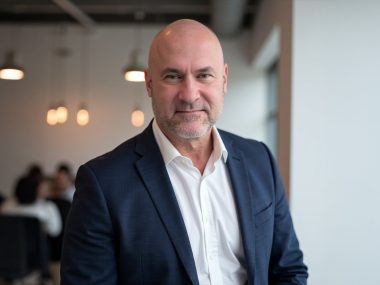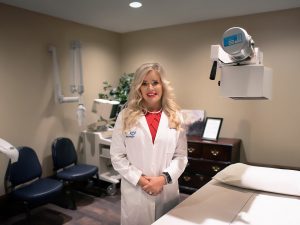The senior living industry is facing unprecedented challenges in risk management. Operators are struggling to maintain financial stability while delivering high-quality care. The main challenges facing the delivery of premium care are rising claims, an evolving regulatory landscape, and shifting resident demographics. Scott Reese, Managing Partner at Echo Assurance, is an industry veteran with expertise is helping operators navigate these challenges in the face of increasing insurance costs and resident care complexities. “Today’s demands in resident care mean good insurance coverage isn’t enough. The best path forward requires true partnership between operators and insurers,” says Reese.
“Communities that embrace this collaborative approach consistently outperform their peers in both resident outcomes and financial performance,” he says. There is a delicate balance between resident autonomy and risk management in senior living facilities. Working strategically with key stakeholders and leveraging the predictive analytics is the best way to ensure quality patient care.
Understanding the Evolving Risk Landscape
Recent benchmarking data underscores a dramatic shift in risk exposure for senior living communities. Assisted living facilities are now caring for residents with more complex medical needs—similar to those traditionally seen in skilled nursing homes. “Assisted living providers are dealing with residents who would have been in skilled nursing just a few years ago. But they don’t have the same resources or financial support to manage that level of care,” explains Reese.
This shift has intensified liability risks and operational pressures, as facilities must manage higher-acuity residents without the same reimbursement structures or staffing levels that skilled nursing facilities have. At the same time, insurance costs have surged, with loss costs rising by a third since 2016. Today, the average senior living facility faces insurance-related costs of approximately $675 per occupied unit. “This is driving up both liability and insurance costs at a rate that many operators simply weren’t prepared for,” he says, emphasizing how this shift requires a “more sophisticated approach” to risk management.
One of the most pressing concerns is the changing nature of claims. While resident falls remain the most significant cost driver at 31% of total losses, their severity has increased substantially — especially in memory care units, where the average cost per fall is 27% higher than in standard assisted living. Even more concerning, elopement claims have now surpassed choking incidents as the highest-severity claims, with an average loss of $285,000 per case. Beyond the clinical aspects, external forces such as social inflation are driving claims costs to new heights. In states like Florida, loss costs have surged to $1,325 per occupied unit — an increase of 6% in just one year. “What we used to settle for $50,000 now regularly exceeds $200,000,” Reese notes. “Jury expectations have shifted, and plaintiffs’ attorneys are getting more tactically advanced in their arguments. This isn’t a temporary trend; it’s the new reality.”
Strategic Insurance Partnerships: A New Approach to Risk Management
Traditional insurance solutions are no longer sufficient. Forward-thinking operators are leveraging their insurance partnerships in transformative ways by integrating claims data with clinical programs to drive proactive risk mitigation. “We’ve helped operators analyze falls by time of day, location, and staffing levels to uncover patterns that basic incident reports miss. When you have data driving your risk strategy, you get real results,” says Reese.
Technology is also playing a pivotal role in reducing claims frequency and severity. Senior living operators that work closely with insurance partners are implementing cutting-edge solutions, such as:
- Predictive analytics for fall prevention
- Real-time staff allocation tools
- Automated documentation systems
- Environmental monitoring technology
When integrated with a comprehensive risk management program, these advancements have demonstrated measurable improvements in loss ratios, driving down both insurance premiums and operational risks. “The best operators aren’t just buying insurance,” Reese asserts. “They’re using it as a tool to improve care, reduce costs, and, ultimately, enhance their communities.”
Insurance Due Diligence in M&A and Portfolio Growth
As consolidation continues within the senior living sector, insurance due diligence has become a critical component of mergers and acquisitions. Investors and operators alike recognize that communities with strong risk management programs and favorable loss histories command premium valuations, often boosting EBITDA multiples — a valuation metric used in M&A to determine the value of a business based on earnings before interest, taxes, depreciation, and amortization (EBITDA) — by 0.5 to 0.75 times compared to peers with less favorable claims histories.
“We’re seeing buyers pay significantly more for communities with strong risk controls in place,” Reese says. “Insurance is no longer an afterthought in M&A—it’s a key driver of valuation.” Reese advises that operators looking to scale their portfolios must prioritize:
- Pre-acquisition risk assessments
- Post-acquisition integration planning
- Legacy liability protection
- Portfolio optimization strategies
Those taking a proactive approach to insurance risk management stand to gain not only financial advantages but also operational stability, ensuring long-term success in an increasingly competitive market.
Managing Acuity Creep Through Data-Driven Strategies
The biggest trend impacting the industry is “acuity creep” — the gradual increase in the complexity and intensity of care required by residents. Communities that have successfully managed this shift share several key strategies:
- Integration of clinical and risk data to identify early warning signs
- Staff training programs that evolve alongside resident needs
- Regular reassessment protocols aligned with insurance requirements
- Targeted technology adoption to address high-risk areas
Workforce stability plays a crucial role in mitigating claims. Data shows that communities with lower staff turnover experience 23% fewer claims, underscoring the importance of investing in employee retention strategies. “Staff retention is one of the most overlooked risk management tools available,” Reese explains.
“Communities with high turnover simply have more claims—it’s that simple. Investing in your people isn’t just good for culture; it’s good for your bottom line.” Top-performing operators are collaborating with insurance partners to develop specialized training programs and career advancement pathways, alongside safety incentive initiatives and mentorship programs. These efforts not only reduce liability risks but also foster a more engaged and skilled workforce to enhance resident outcomes.
Looking Ahead: The Future of Senior Living Risk Management
The path forward for senior living operators demands a paradigm shift in how risk is managed and mitigated. Successful communities will need to:
- Integrate risk management into every operational decision
- Leverage technology to enhance both care delivery and liability protection
- Forge strong insurance partnerships centered on prevention, not just coverage
- Utilize data analytics to drive continuous improvement
- Develop robust staff education and retention initiatives
“The communities that succeed in the next decade will be those that take risk management as seriously as they take resident care,” Reese concludes. “Insurance isn’t just about protecting against losses, it’s also about building a sustainable future.” As the industry continues to evolve, operators must embrace innovative risk management strategies that go beyond traditional insurance policies. The organizations that do so will not only achieve sustainable cost structures, but also provide the highest level of safety and care for their residents.
To learn more about how strategic insurance solutions can transform your senior living community, visit Echo Assurance’s website or connect with Scott Reese on LinkedIn.











